- United States
- Wyoming
- Firehole Lake Drive: geysers and hot lakes

Located in the Lower Geyser Basin area near Fountain Paint Pot, Firehole Lake Drive is a 5.5 km one-way road that runs from south to north. Be careful not to confuse it with the small road that leads to Firehole Lake Flat, located a little further north.
The small road is very interesting because it takes us to approach different geothermal phenomena. Because the car parks are small, buses do not stop there, which means that the area is relatively little used.
Firehole Lake Drive being located in the Bear Protection Area, the road will be closed every year between March 10 and the Memorial Day weekdend (end of May).
The visit begins with the discovery of beautiful hot springs. First the Firehole Spring blue pool, often adorned with beautiful ochre colours due to the presence of bacteria that tint the less warm waters. Then Surprise Pool, a small dark blue pool, next to which stands the imposing Great Fountain Geyser whose concretions form large orangey yellow circles. A very small parking lot and a pontoon will allow you to stop and approach these two last phenomena.
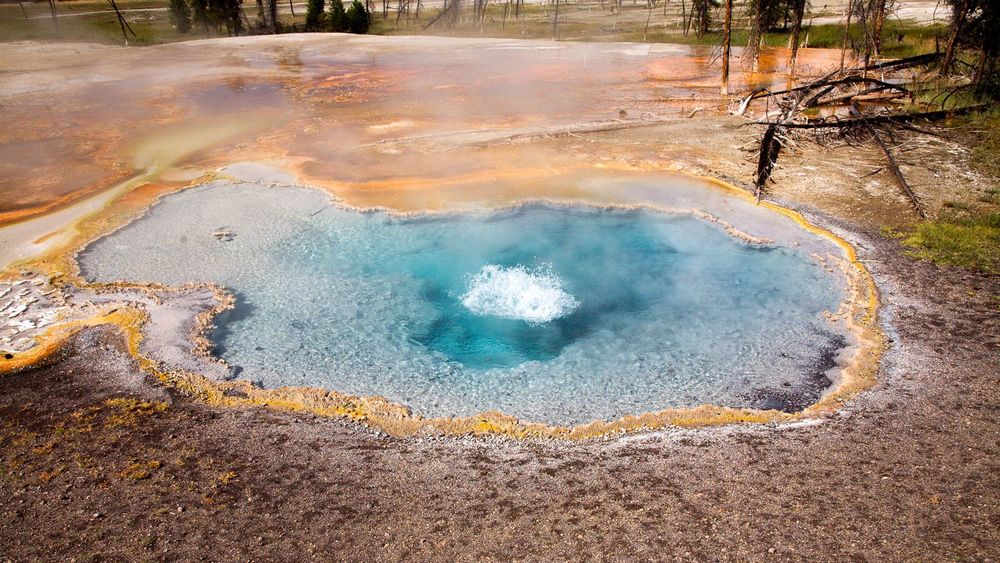
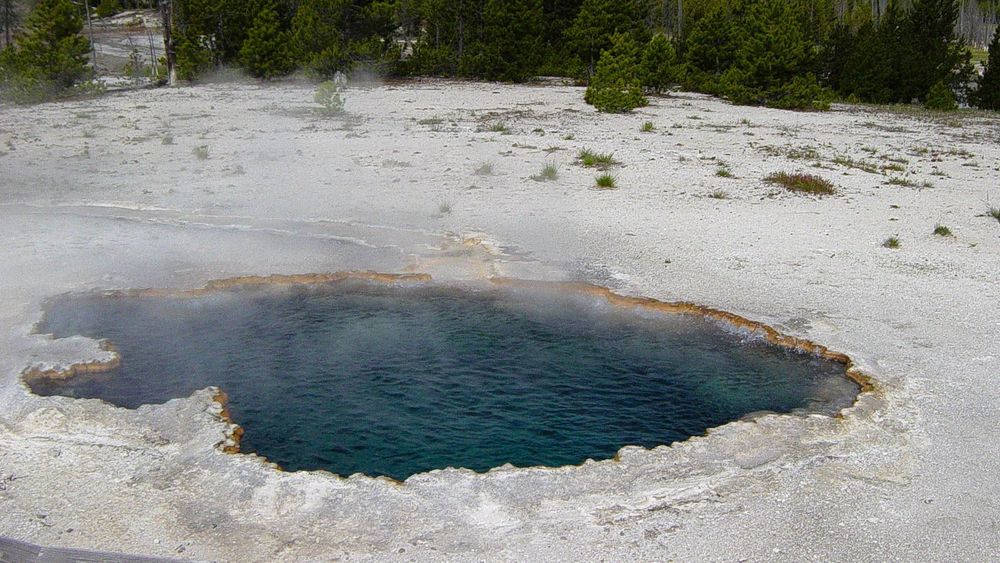
1Great Fountain Geyser
Great Fountain Geyser is one of the Yellowstone's major geysers, throwing water between 23 and 67 metres high for 45 to 60 minutes, sometimes even 2 hours! Its eruptions are regular and predictable. They occur on average every 11h30, but intervals can vary between 9 and 15h. The Visitor Center of Old Faithful or the NPS Yellowstone Geysers mobile application, will give you the time interval until the next eruption. The indicated margin is more or less 2h00. So you'll need to be patient, or lucky, to see Great Fountain Geyser erupting.
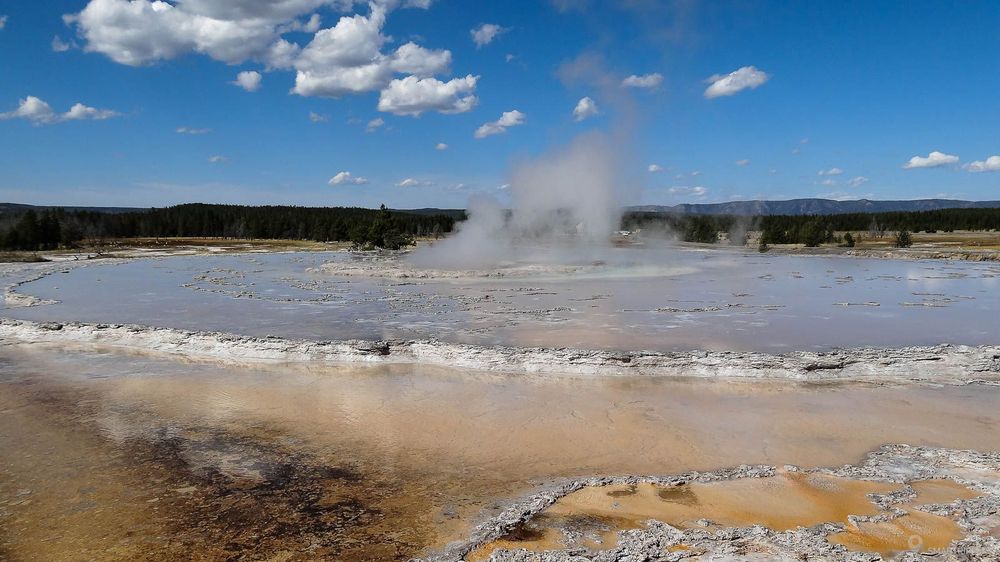
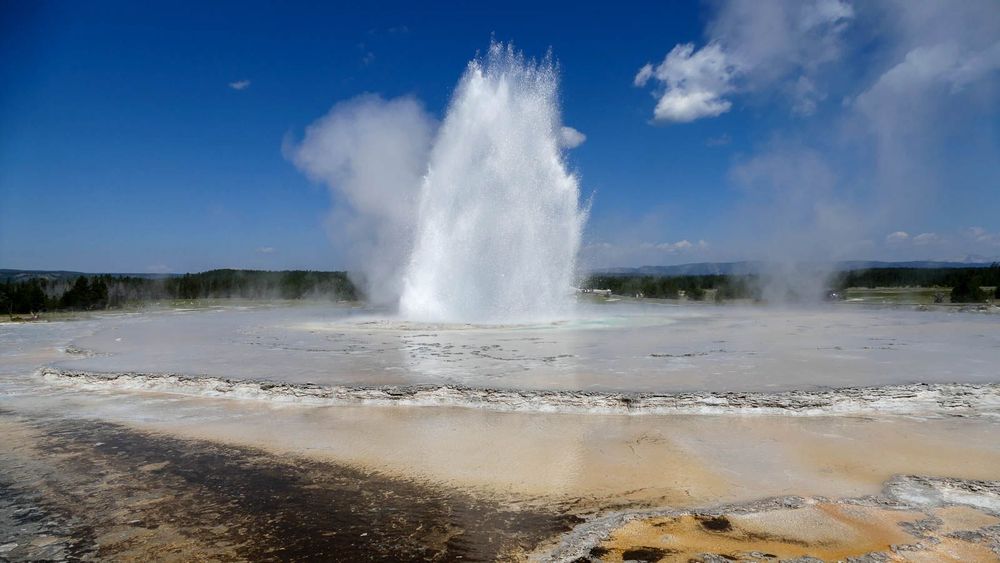
It should be noted that predictions are not given between October and the Memorial Day weekend.
Nevertheless, there are some early warning signs that Great Fountain Geyser will soon erupt. About 70 to 100 minutes before the eruption, water begins to escape from the hole and 30 minutes later, small bubbles will appear on the edges of the basin. Little by little, the bubbles will become bigger and larger and when they reach 1 meter in height, the eruption will begin. A small period of calm will follow, then it's the explosion! This is not continuous, but consists of several successive expulsions followed by a pause phase. This cycle continues until the end of the eruption.
You can also find all this information by downloading the NPS Yellowstone Geysers mobile application (free).
2White Dome Geyser
Shortly after Great Fountain Geyser, we are approaching another geyser: White Dome Geyser. A few parking spaces and a small wooden pontoon make it possible to approach the 3,7 meters cone made of geyserite. It is the accumulation of minerals projected during these eruptions that shaped this cone, a bit like stalagmites. It is one of the highest cones in the park!
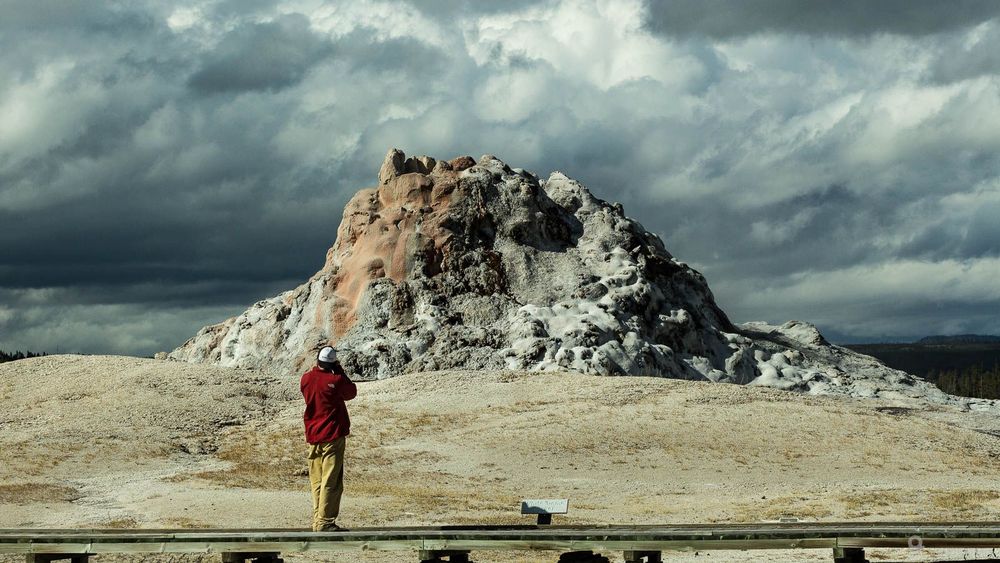
Unlike its neighbour, White Dome Geyser is unpredictable. It has no sign that announces its eruptions which are rather brief, lasting 2 to 3 minutes. The geyser erupts regularly, on average every 20 to 35 minutes, but more frequent eruptions of up to 3 hours can be observed.
When we came here in 2013, we waited 45 minutes in front of the little cone, which did not emit the slightest drop of water. Tired of waiting, we left. In 2017, we anticipated this time by deciding to picnic in front of the geyser, which erupted after 20 minutes.
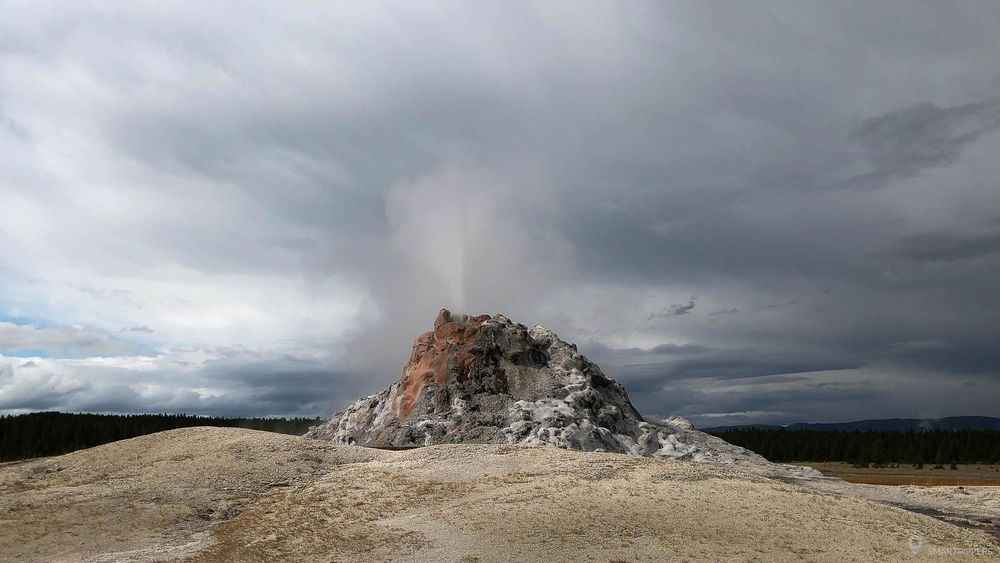
Although the cone is large, the jet is much less impressive. It is thin and rises to 9 meters high at the very beginning of the eruption. The jet is continuous and decreases gradually until it shuts down. It is therefore necessary to be ready at the moment of the eruption to observe it well.
A little further along the lake is the small Pink Cone Geyser. Like White Dome Geyser, its small cone is formed of pink tinted geyserite. Its eruptions are similar with the same height, but last between 1h30 and 2h00 while they occur much less frequently, on average every 18 to 25 hours.
3Hot lakes
After crossing a small swampy meadow, the road now comes to the edge of Hot Lake, Black Warrior and Firehole Lake, three steaming lakes that pontoons allow you to discover by making a small loop on either side.
In the middle of Black Warrior Lake is Steady Geyser, a permanently active geyser! It seems he hasn't stopped since his discovery, many years ago. Although very small, it ejects a significant amount of water into Black Warrior Lake, then Hot Lake, keeping both lakes at a high temperature.
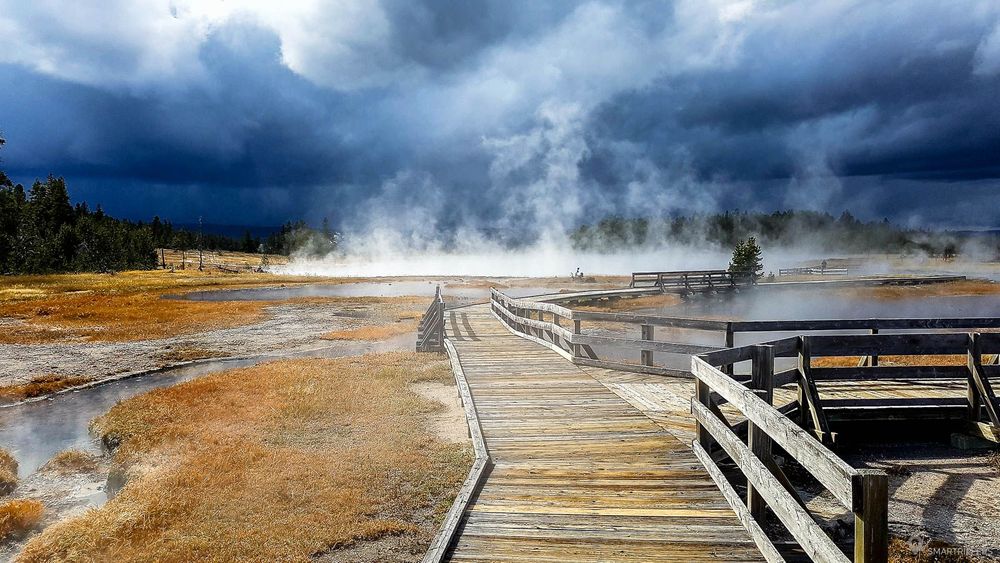
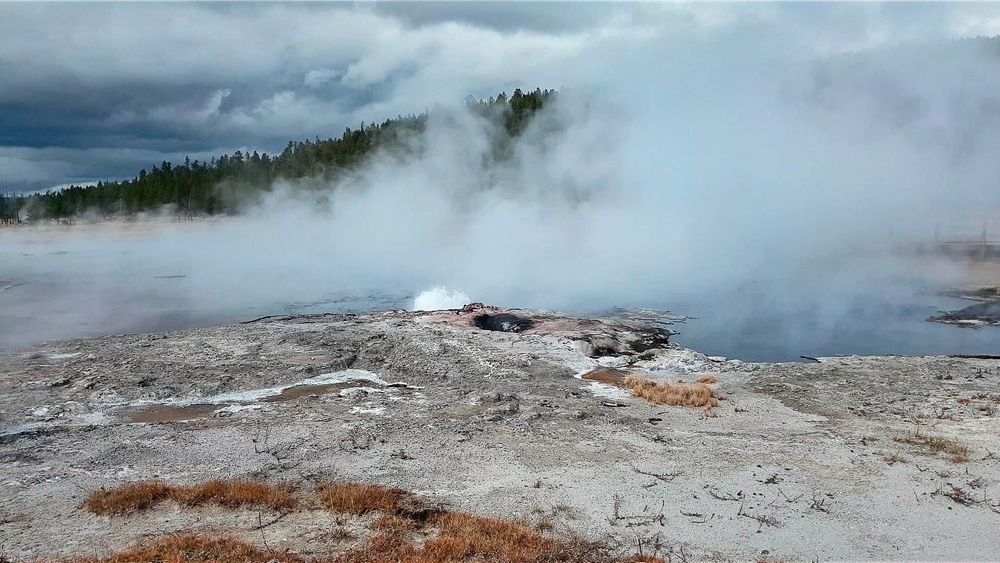

If the air is cool, you will probably be wrapped in water vapour as you sail through the pontoons. Be careful because it slips in winter.
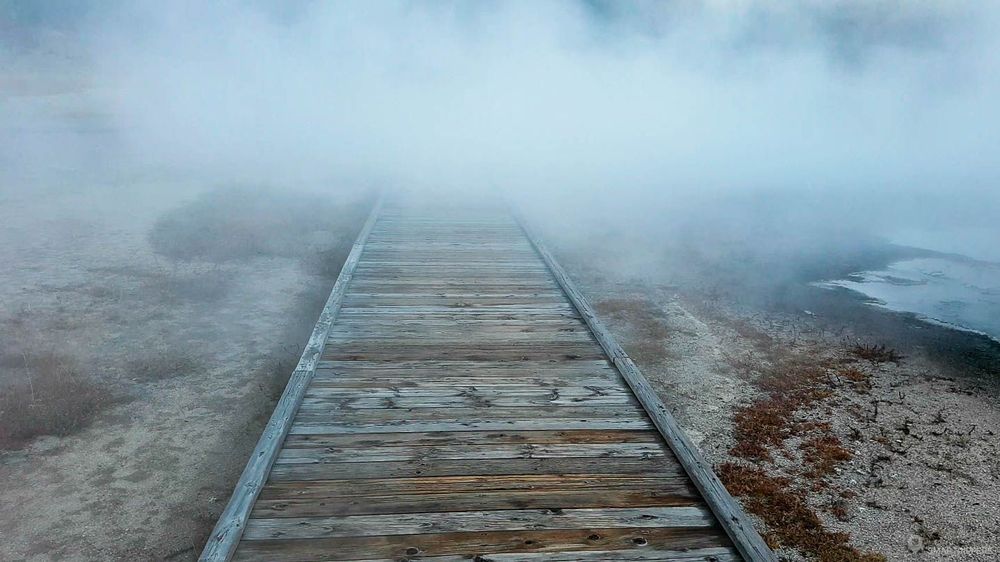
On the other side of the road is the smallest Firehole Lake, also fed by a small geyser, Young Hopeful Geyser, whose jet rarely exceeds the meter.
From the lakes, the road continues and returns after less than 2 km to the main road.
Discover very interesting geysers in a place less frequented than the traditional basins.
The small parking lots are quickly full, it is possible not to find a place to wait for an impending eruption, but it is also what still preserves the place from crowds.
We are Sandrine and Flo, French thirty-somethings. In 2019 we quit everything to live our dream, become nomads and travel around the world. We left with our baby, Lena, who was only 5 months old at the time. After a first trip around the Pacific Ocean by plane and a long 3 months stay in Hawaii, we left to discover Iceland for 3 months on board our 4WD pickup truck and truck camper. Then we continued our adventure in North America.
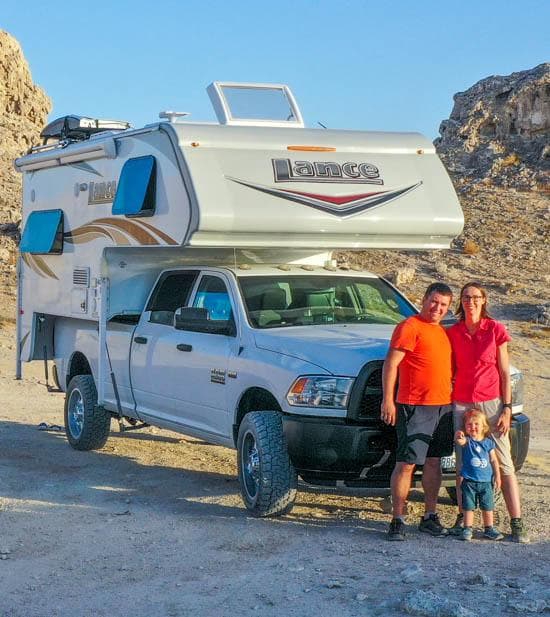
Today, if we can continue this adventure, it is above all thanks to our blog, Smartrippers! We created it one day in 2016, with the desire to share our good travel tips, without thinking that it would lead us there! We have developed it a lot over the years and have become experts on our 3 favorite destinations: Hawaii, Iceland and the American West. We now guide you to these destinations to help you plan the trip of your dreams!
Follow our adventures!